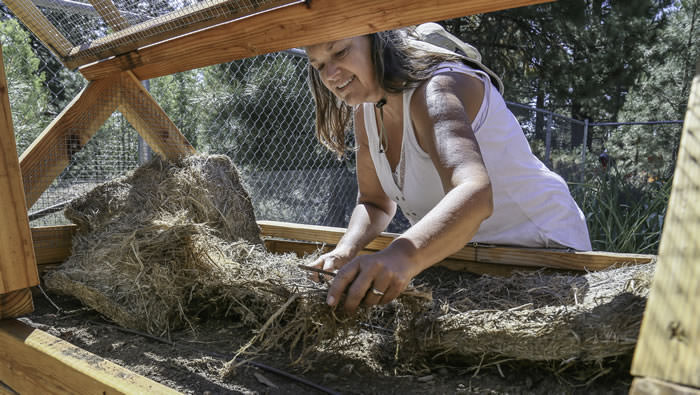edible garden
BEDDING DOWN
Tips for winterizing your high-desert garden.
WRITTEN BY KURT BICKEL
PHOTOS BY SHAUN HUNTER
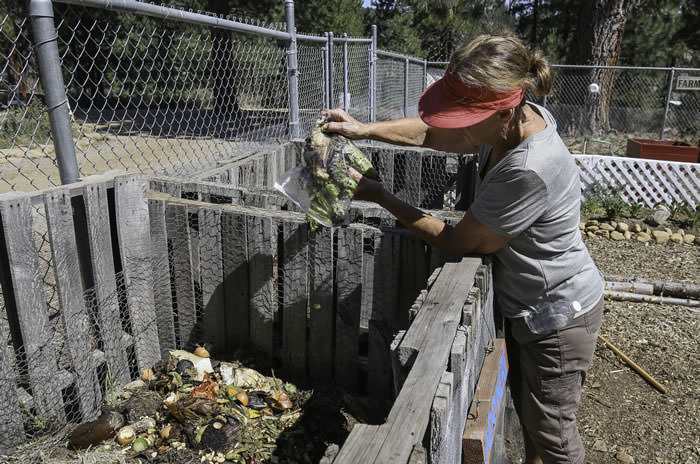
Fall in the Sierra is predictably unpredictable. It might show up as a gentle tap on the shoulder, that slight crispness that appears one morning, one or two leaves on the aspen showing yellow around the edges. Or it might come with a bullhorn, with a sudden blanket of snow and chain controls on the high passes.
However it presents, it means an end to the growing season. It’s easy to feel melancholy if you’re a dedicated grower, knowing that you may not see green shoots for months, but there’s plenty of work to be done to make next year’s harvest a bumper crop and stave off the winter blues for a bit.
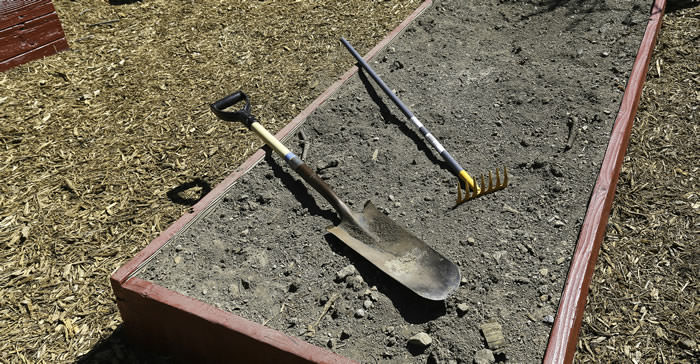
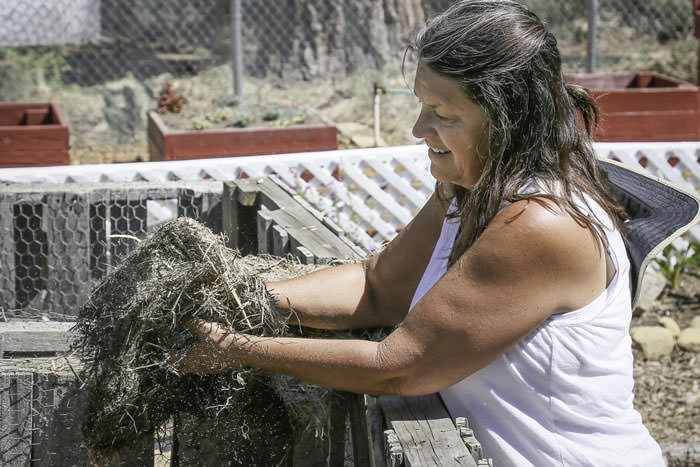
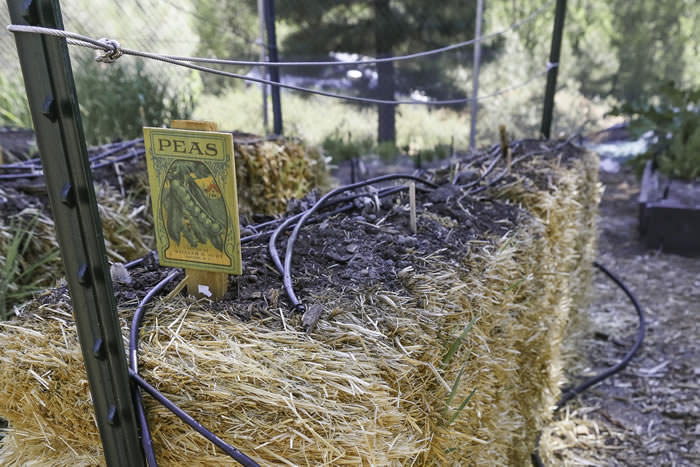
Start recycling
Slow Food Lake Tahoe runs a variety of programs in the Truckee area, including a demonstration garden, gardening workshops, and a community soup night, all focused on its good, clean, and fair philosophy of food sourcing.
Katie Townsend-Merino became SFLT’s demonstration garden manager after leaving her job as a college vice president, returning to her roots — her family has farmed or worked on farms for generations. She shares tips for fall garden preparation.
“Fall … it’s not rocket science, but it is work,” Townsend-Merino says. “We remove all the old organic material (roots, droppings, leaves, etc.) that might harbor disease over the winter. We dig in compost, then cover the beds with straw. Some plants, like onions, garlic, and rhubarb, you can leave in to winter over. Otherwise, we try to leave things in as long as possible, using frost cloth until the temps drop into the teens.”
She adds that SFLT could actually keep its greenhouse going all winter were it not for the pipes freezing, so the team needs to shut down and drain its irrigation system before winter sets in.
“All that organic material we removed goes into our compost pile,” she says. “It’s important to hot-compost that material so you’re getting rid of parasites and other unwanted organisms. Come spring, we’ll dig into that material in the form of compost. It’s nature’s recycling.”
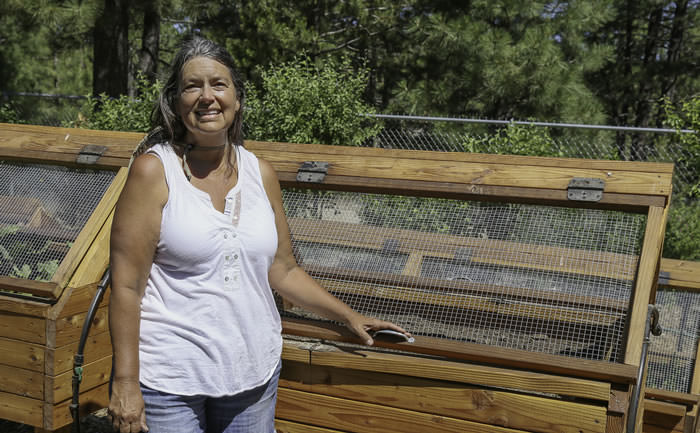
Frozen fruit, anyone?
Perched partway up Mt. Rose, surrounded by native sagebrush in the notorious Washoe Zephyr wind corridor, Callahan Ranch provides some unique challenges for growers. Leslie Lyles and her husband Brad’s solar-powered home is an oasis of green surrounded by fruit trees and growing beds, proving that those challenges can be overcome.
Lyles, a certified arborist who holds a master of science degree from University of California, Davis, is co-owner of Stewardship Horticultural, a local horticulture consulting firm. At her home, she applies 30 years of experience to her fruit trees, producing crops of apples, nectarines, and cherries. For the fall closeout, she has some pointed advice.
“I hate the myth of fall pruning,” Lyles says. “Until the tree has a clear signal to shut down for winter, early pruning makes the tree put energy into regrowth, losing energy for the spring. If the tree hasn’t gone dormant, you’re also opening it up to a variety of disease organisms. I wait, at minimum, until I see really strong fall colors, or better still, ’til December and the following months, so I’m sure the tree is dormant.”
How you prune matters as well.
“One of the things we do is teach people how to prune to maximize production potential,” Lyles says. “Weather variability and microclimates here mean that the same tree might produce every year, or every 10 years. So you need to do the pruning right.”
Lyles recommends allowing trees to adapt to local conditions, advising against short-term fertilization.
“Just water well before the irrigation system is shut down, apply a dormant oil spray before the hard freezes come, and, most importantly, get rid of leftover fruit so you’re not advertising for insects and fungi,” she says.
Go dormant
Your beds are laid to rest, trees bedded down, irrigation system drained. In case you’re looking to curl up by the fire with a good book on the ins and outs of high-altitude growing, check out July & Winter: Growing Food in the Sierra, the book released last fall by Gary Romano, owner of Sierra Valley Farms in Beckwourth, Calif. The book draws on his years of experience and expertise in growing food at 3,000 to 8,000 feet in the Sierra, and offers plenty of tips for local growers.
Spring is just around the corner. Time to start planning.
Freelance writer Kurt Bickel plays Elmer Fudd to the horde of rabbits that enjoy his attempts at growing food.
Resources
Slow Food Lake Tahoe
SFLT’s demonstration garden is located at the Truckee Regional Park, 10500 Brockway Road, Truckee, Calif.
For details, call 530-582-7720 or visit Slowfoodlaketahoe.org
Stewardship Horticultural
Leslie Lyles • For details, call 775-849-1215
July & Winter: Growing Food in the Sierra by Gary Romano
Bona Fide Books, $19.95 • Bonafidebooks.com
